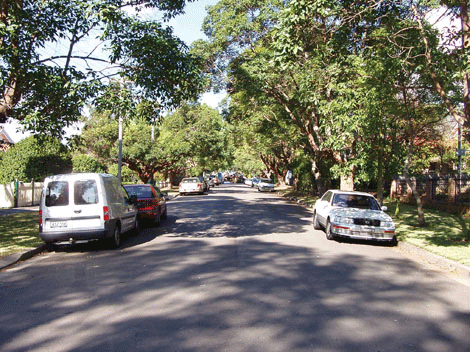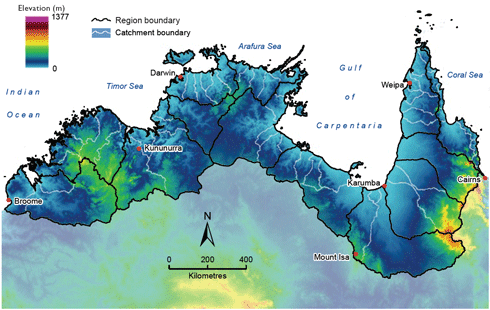
|
Published:
‘Working trees’ key to urban resilience?
They lower ambient temperatures in summer, reduce flooding, filter pollutants, sequester carbon, provide habitat for birds and animals, and add beauty and value to our homes and neighbourhoods. Yet the trees that grace the streets, backyards, parks and fringes of some Australian cities are beginning to disappear due to drought, high-density development and neglect.

|
|
Street trees such as these in Eastwood, Sydney, provide valuable services to governments and local communities. Credit: ANU
|
In a recent paper, ‘Urban trees: worth more than they cost’, the University of Melbourne’s Dr Greg Moore estimated that over recent years at least 15 per cent of mature trees in metropolitan Melbourne have suffered drought stress, with some already dead and many close to dying.1
The rate could be accelerating, with the Melbourne Age reporting in August that the City of Melbourne had lost 900 trees from public spaces last year – triple the normal annual loss – with 40 per cent of the remaining trees under stress due to drought and water restrictions. Adelaide has also reported drought-related tree loss.
Dr Moore says trees are ‘mature infrastructure assets’ providing ecological services that have yet to be properly valued and, once lost, would be difficult to replace.
He estimates the cooling effect of 100 000 mature urban trees – inner city Melbourne has around 70 000 – could save a city 3 million kilowatt hours of electricity annually. This represents around 3600 tonnes of saved carbon emissions, not to mention the 300 million litres of water that would have been used to generate that amount of electricity.
In the nation’s capital, the ACT Government last year commissioned a detailed study by the Australian National University on the value of trees in Canberra’s streets, parks and reserves.
The ANU researchers estimated the 2008 value of ecosystem services provided by Canberra’s 26 million square metres of street tree canopy to be $23.5 million – $6 million saved annually in energy and air conditioning costs, $12 million in pollution reduction, and $5.5 million in stormwater mitigation and reduced infrastructure costs.2
ANU researcher Dr Chris McElhinny points out this figure does not take into account the carbon sequestration and storage value of these trees. As it turns out, because they are relatively young and fast-growing, Canberra’s urban trees have a high sequestration rate – around 0.6 tonnes of carbon per hectare per year, compared to 0.07 tonnes of carbon per hectare per year for the mature native vegetation surrounding Canberra.
‘While 95 per cent of the current carbon stock of the ACT is stored in the non-urban estate (land), its contribution to annual carbon sequestration is disproportionately low – around 52 per cent – compared to the urban estate, which contains just 1 per cent of the ACT’s carbon stock, but accounts for around 48 per cent of the sequestration,’ says Dr McElhinny.
The ACT Government will use the information from the ANU study to develop its climate change strategy and tree-planting plans for the future.
Dr Moore says little scientific research work has been done in Australia on the benefits of urban vegetation and there is even less economic data to inform decisions.
He disagrees with the view that urban trees – and lawns and gardens, for that matter – should be left to die in the wake of severe water restrictions.
A City of Melbourne spokesman says the council ‘works closely with water suppliers and the state government to keep trees as healthy as possible’ (Melbourne has been subject to Stage 3a restrictions since 2007). Additional mulching, subsurface irrigation systems and rainwater collection are included in a recent council proposal to save the city’s landmark trees.
The council wants to ensure the long-term health of Melbourne’s tree stocks by maintaining soil moisture levels at a minimum 40 per cent – the scientifically established ‘trigger point’ below which trees suffer severe water stress. At the moment, levels in some areas are as low as 20 per cent.
‘The water used to maintain trees and landscapes during drought and summer is neither wasted nor lost,’ says Dr Moore. ‘It returns real economic and sustainable value in the years ahead.’
1 Moore GM (2009) Urban trees: worth more than they cost. Proceedings of the Tenth National Street Tree Symposium. (Eds D Lawry, J Gardner and S Smith) pp. 7–14. University of Adelaide/Waite Arboretum, Adelaide.
2 Killy P, Brack C, McElhinny C, Cary G and King K (2008) ‘A carbon sequestration audit of vegetation biomass in the ACT’. ACT Government Report.



